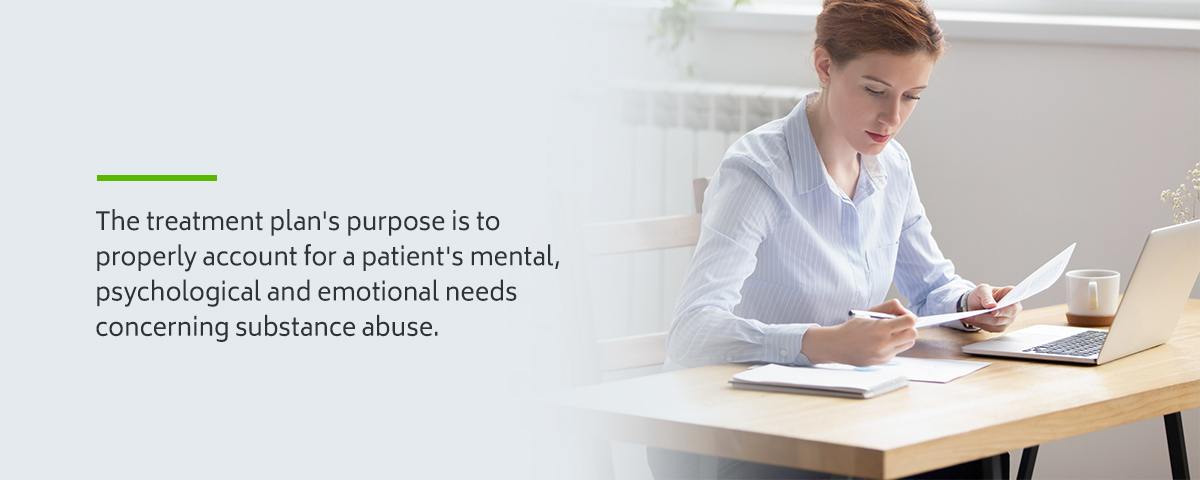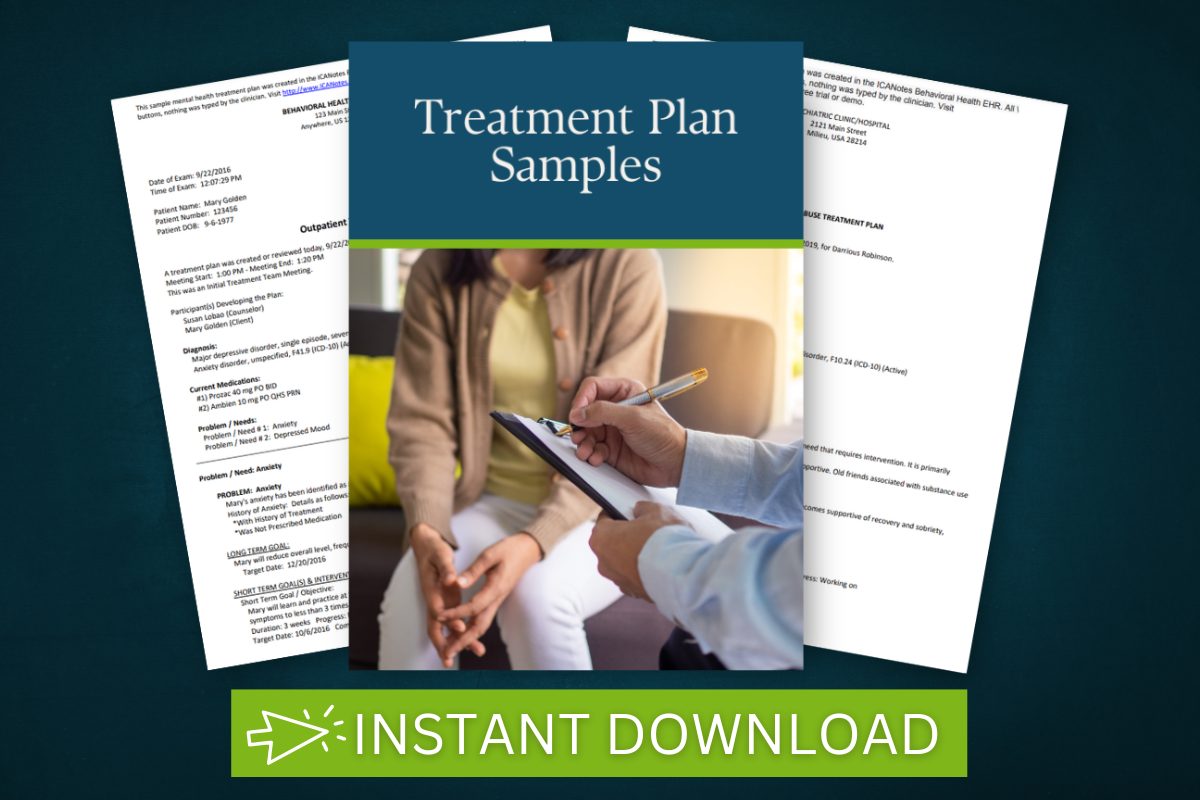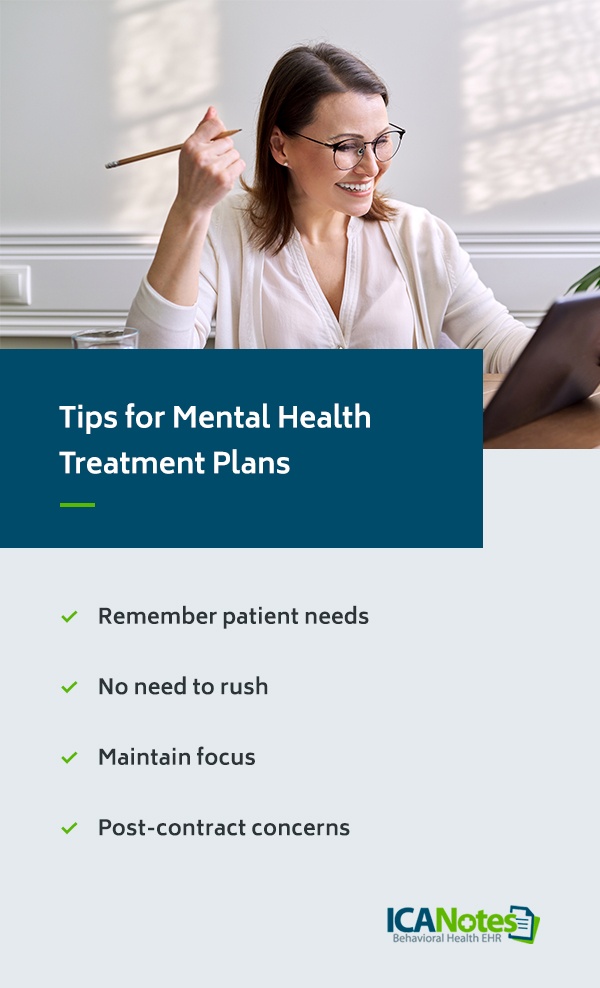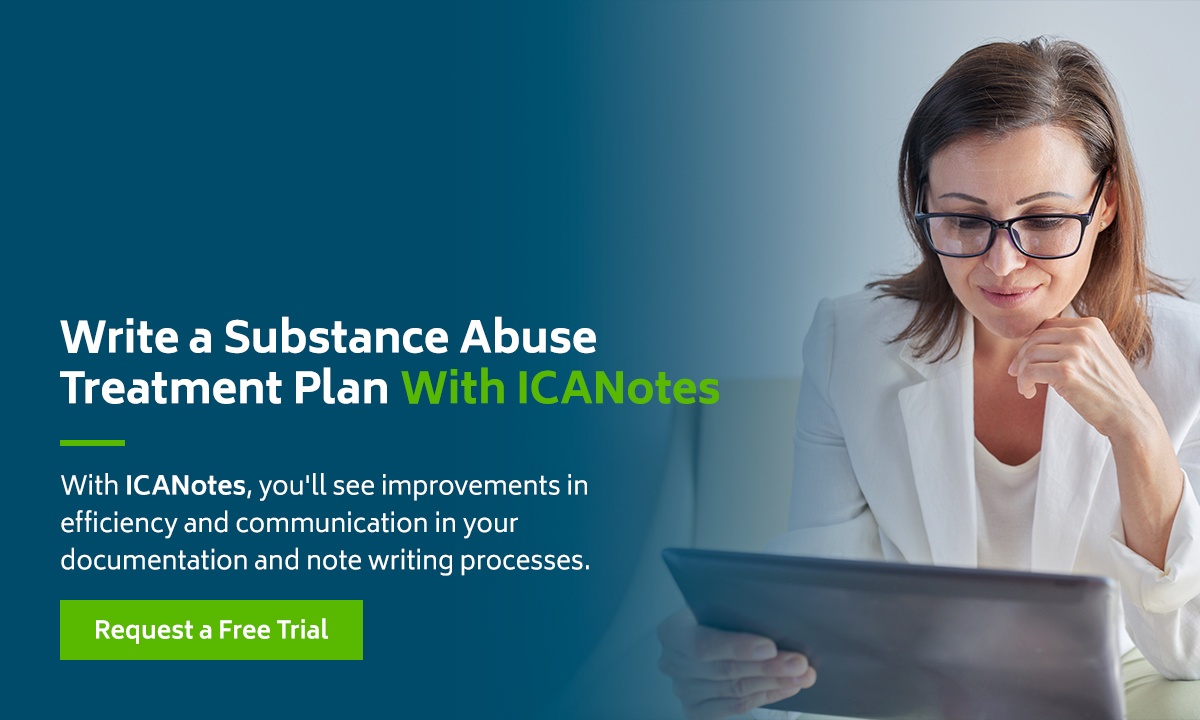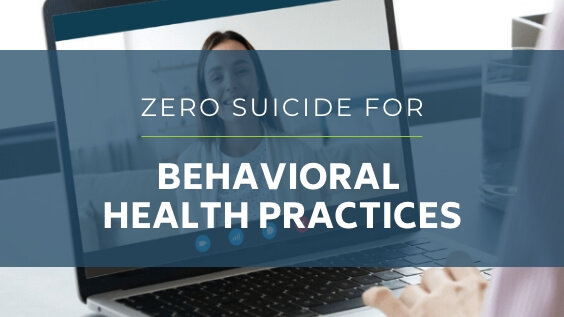
Creating a Substance Abuse Treatment Plan
Substance abuse treatment plans are beneficial for those who seek treatment for addiction. Behavioral therapists, counselors and psychiatrists use these plans to help individuals with recovery. Patients who suffer from substance abuse disorders can experience issues in all aspects of their life and it can impair their daily functions.
In 2017, over 21 million American adults were dealing with addiction issues. These numbers have been steadily rising in the last few years. With millions of people dealing with this disorder, treatment cannot always be uniform for each individual. Substance abuse affects people from all demographics who have varying habits and experiences. Substance abuse treatment plans are flexible, configurable options that enable patients to get the help they need.
Table of Contents
- What Is a Substance Abuse Treatment Plan?
- Why Do You Need a Substance Abuse Treatment Plan?
- What to Include in a Substance Abuse Treatment Plan
- Examples of Goals and Objectives to Include
- How to Choose Which Goals to Include
- How to Write a Treatment Plan For Substance Abuse
- Tips for Mental Health Treatment Plans
- How to Create a Treatment Plan For Substance Abuse With ICANotes
What Is a Substance Abuse Treatment Plan?
A substance abuse treatment plan is a clinical document tailored to the individual's specific needs. Treatment plans are commonly used as a bridge between evaluation and treatment. The treatment plan centers around the patient's diagnosis and its manifestations and it defines the short and long-term goals of treatment. All treatment plans are different, but the goals and interventions align with how the clinician will administer the patient's treatment. For patients struggling with addiction, a treatment plan is often the first step on the road to recovery.
A patient's willingness to participate in a collaborative addiction treatment plan may indicate their desire for help. Addiction professionals develop these plans to build personalized solutions, set realistic expectations, and recommend treatment options. A general substance abuse treatment plan usually includes:
- Identifying the patient's illnesses or disorders and their manifestations
- An overview of the major goals of treatment.
- Listing the interventions being used to achieve those goals
- A general timeline for patient progress.
Outlining these basic informational areas is the first step to producing a precise, comprehensive substance abuse treatment plan. The treatment plan's universal parts will help the clinician and patient create a shared vision. This document can also record major milestones or successes that the patient experiences. A treatment plan may also summarize how the patient's symptoms affect their social, financial, physical, and mental health. Gathering this information can be helpful for the therapist to understand the gravity of the situation.
An addiction treatment plan can record the patient's particular characteristics that may need extra attention during treatment, particularly for individuals with co-occurring mental health and substance use disorders.
Download our free guide on how to write Treatment Plans
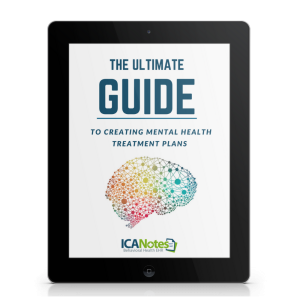
Why Do You Need a Substance Abuse Treatment Plan?
A substance abuse treatment plan is beneficial to a broad range of individuals suffering from addoctopm. The treatment plan's purpose is to properly account for a patient's mental, psychological, and emotional needs concerning substance abuse. Developing a treatment plan will also provide insight into a patient's social needs and the health of their current relationships. This information may indicate how much their substance abuse is affecting their functioning in daily life.
Equipped with this precise knowledge, a behavioral therapist can easily understand the interactions of factors in a patient's life that have contributed to addiction. While these documents are universally standard in their layout, they are entirely individualized, accommodating all kinds of problems. Another way patients benefit from these treatment plans is that they involve a shared agreement — patients communicate and collaborate with their behavioral therapist or counselor to come up with the most effective solutions.
When patients feel their voice is heard and valued, they may be more likely to feel hopeful about their addiction treatment. With a common goal in the contract, the patient may also feel more motivated to engage in treatment and feel confident in their progress. Without using a substance abuse treatment plan, the treatment recommended through regular evaluations may not fully benefit the patient. With detailed, documented descriptions and listed goals, both the therapist and patient will have a concrete direction for progress.
What to Include in a Substance Abuse Treatment Plan
When thinking about what should be included in an addiction treatment plan, focus on patient characteristics that are relevant to their substance abuse. The document's main purpose is to make progress with your patient or client. There are basic components as well as more individualized elements to every treatment plan. Each individual dealing with substance abuse has different levels of severity and may even have different symptoms.
A substance abuse treatment plan considers this when outlining and describing specific areas of concern. Some particular elements that should be included in an addiction treatment plan are:
- Goals and objectives: List the most important goals and outcomes of treatment and how measurable objectives will be accomplished.
- Significant concerns or problems: Examine the patient's areas of concern or worry. These major issues will help the counselor keep track of signs of distress.
- Patient information: Record a patient's past diagnoses, medication, therapy, or other kinds of treatment. A patient's history should also include their demographic information, symptoms, and moods.
- Interventions: Set specific exercises, methods, or techniques that the patient can use to achieve their objectives. Small, incremental steps may help increase the confidence of a patient when they see progress.
- Progress: Create a customized way to measure and track a patient's progress. Monitoring outcomes can allow the therapist or counselor to make adjustments if needed for improvement.
Documenting these elements in more detail can help provide structure for the most effective addiction treatment. With this information, a behavioral therapist can provide clarity to their patient and give them proper direction to see change. Compared to the initial, general outline, the treatment plan's detailed components focus on a patient's most significant problems.
Examples of Goals and Objectives to Include
Setting goals is especially beneficial for patients because it gives them something to accomplish and look forward to. Goals can motivate, encourage, and inspire patients to overcome their battle with substance abuse. Typically, goals help patients achieve an improved condition and identify their priorities. Concentrating on specific, achievable goals is easier for the patient than seeing their addiction treatment as a vast, indefinite obstacle.
While goals and objectives are necessary for a substance abuse treatment plan, they differ slightly in purpose. For example, a goal is a broader idea or intention, whereas an objective is a specific action that leads to that intention. This breakdown of goals can be useful when listing specific hopes that a patient has for their treatment.
Some examples of goals and objectives to include in a substance abuse treatment plan include:
- Learning to communicate effectively.
- Overcoming substance abuse or addiction.
- Implementing healthy coping mechanisms.
- Developing stress management skills.
- Learning how to express negative emotions productively.
- Regularly attending counseling or addiction meetings.
Additional techniques that assist in developing goals and objectives include:
- A brief clinical statement of what the patient wants to change.
- Setting goals that align with their treatment purpose and how the patient can achieve that change.
- Providing a healthy mix of short- and long-term goals to outline milestones of progress.
- Assessing specific methods and actions that are reasonably achievable.
- Examining if the identified concerns and problems align with the outcome of active treatment.
These are just a few examples of what goals should look like for substance abuse patients, but they may vary depending on their lifestyle. For instance, those with children or spouses may want to explicitly include improving those personal relationships and resolving barriers.
Access our Sample Treatment Plan Library
This comprehensive library offers treatment plans across diverse psychological conditions, providing clinicians with evidence-based, time-saving frameworks that can be easily customized to meet individual patient needs. Save hours of administrative work while ensuring thorough, professional treatment documentation that supports comprehensive patient care and meets the highest clinical standards.
How to Choose Which Goals to Include
Most patients have a set of broad goals, but the purpose of an addiction treatment plan is to narrow down these goals into more distinct categories. Without a specific set of criteria, developing the patient's most important goals may be challenging. When choosing which goals or objectives to include in the substance abuse treatment plan, it is important to remember the utilization of SMART goals. These goals can help discover which objectives take precedence over others. SMART goals include characteristics that are:
- Specific: Explicitly descriptive actions that a patient can clarify and participate in.
- Measurable: Quantifiable objectives or actions that a therapist can track and monitor for progress.
- Achievable: Attainable goals that prevent a patient from feeling overwhelmed or burdened.
- Realistic and relevant: Objectives that are reasonably applicable to the patient and align with their treatment goals.
- Time-bound: Goals have a target completion date or timeline customized to a patient's needs.
Using SMART goals is an excellent way to determine a patient's priority arrangement. SMART goals allow the behavioral therapist or counselor to explore which goals are immediately worth focusing on instead of those that are not a major concern. However, at least a few of these goals should focus on the direction of long-term results, such as continuing therapy or treatment indefinitely, if needed. A patient's goals should also take their extent of substance dependence and support networks into account.
The purpose of choosing the right goals is to provide both the therapist and patient with solutions to problems in a visual, tangible manner. Implementing SMART goals is helpful because it prevents the patient from experiencing immense pressure, leading to feelings of discouragement.
How to Write a Substance Abuse Treatment Plan
Writing a treatment plan is the first step of the therapeutic process. This document serves as the primary guideline for a patient's progress and recovery. With that in mind, it's important to engage in an initial assessment with a patient before writing the addiction treatment plan. Keeping the program centered specifically on a patient's struggles with substance abuse is essential for appropriate treatment.
The steps to writing an effective, cohesive treatment plan for substance abuse can include:
- Gathering information during an evaluation.
- Discussing the patient's reason for seeking treatment.
- Communicating about the patient's current behaviors and symptoms.
- Identifying problem statements.
- Pinpointing any safety concerns or risks.
- Articulating patient's involvement in treatment.
- Reviewing patient's substance use.
- Assembling behavioral observations.
- Examining, signing, and dating the finalized treatment plan.
Using an existing template for treatment plans can also be very helpful for behavioral therapists and counselors. Following the treatment plan's progress also allows patients to know their expectations, making them more accountable for their actions. This accountability can help them see the value in their recovery and overall health. When writing a treatment plan, therapists need to see the plan from their patient's perspectives.
This method can offer an increased sense of intuition when communicating with patients about treatment that they will be receptive to. Writing an addiction treatment plan that fully involves a patient and therapist can also reduce a patient's feelings of isolation and hopelessness.
Tips for Addiction Treatment Plans
Documenting and charting notes is essential to keep track of progress and compare it with the patient's initial assessment. Some additional tips that may be helpful when developing a substance abuse treatment plan are:
- Remember patient needs: Transparency, empathy, and patience are vital components of therapy. These characteristics interrelate with a patient's needs, as well.
- No need to rush: Multiple sessions may be necessary to finalize a treatment plan. It's more important for a treatment plan to be useful and applicable than readily available.
- Maintain focus: The treatment plan should center on priorities and useful goals that a patient can easily understand and follow.
- Post-contract concerns: Therapists can note new problems that emerge after the treatment plan is completed in progress notes. Treatment can be transitioned or adjusted accordingly.
Ultimately, setting goals and aiming to reach them is the most fundamental aspect of a substance abuse treatment plan. The treatment plan should also go hand in hand with other mental health records. These records may include information on psychiatric evaluations and behavioral or medical notes. Progress notes should allow a therapist to communicate effectively with the patient and any other personnel who may also be treating the patient.
While SMART goals are undoubtedly an excellent way to determine appropriate outcomes, SOAP notes can also be worth keeping in mind. When writing a substance abuse treatment plan, SOAP notes can help check that all necessary information is documented correctly in a patient's session. For treatment plans that center on substance abuse, the content of SOAP notes should include:
- Subjective: Descriptions relevant to the patient's condition, such as their experiences and feelings.
- Objective: Include the facts and information, such as the patient's substance absue diagnosis and specific behavioral details.
- Assessment: Combine the subjective and objective data to formulate a professional behavioral interpretation.
- Planning: Conduct the process of planning appropriate action that they can implement by the next session.
How to Create a Substance Abuse Treatment Plan with ICANotes
Creating an effective addiction treatment plan is easy with ICANotes. We can provide you with a fully templated service for documenting electronic health records. Inpatient or outpatient behavioral settings for addiction can take advantage of our intuitive charting solution. With ICANotes, you can see additional benefits, such as:
- Out-of-the-box, sophisticated documentation that meets most standards.
- Electronic health record system that reduces documentation time.
- An intuitive program that requires little training and was developed by mental health professionals.
- Access to patient portals and practice management.
- Outcome measurement and assessment tools.
- Security features such as encryption and easy, integrated billing.
- Software that is compliant with HIPAA, Medicaid, Medicare, CARF, and other regulatory entities.
There are many other benefits to implementing ICANotes as the documentation system in your practice. As of recently, telehealth has become increasingly popular. ICANotes offers telehealth features to conduct sessions on a flexible schedule that also allows patients without transportation to access treatment. The healthcare environment involves complexities that make creating well-described documentation that meets regulations very time-consuming.
With ICANotes, we want to make this process easier and faster for you, so you can spend more time developing effectove addiction treatment with your patients. With our tools, you can improve the consistency, legibility, and turnaround time of your note-writing processes. We also created our pre-configured templates to assist professionals in various settings and provide quality and efficiency.
Write a Substance Abuse Treatment Plan With ICANotes
With ICANotes, you'll see improvements in efficiency and communication in your documentation and note writing processes. ICANotes makes it easy to customize your paperless templates to meet your patient's needs. Devote more time to your patients by enhancing and managing your workflow with our software that makes scheduling, practice management, assessments and other clinical content much simpler.
ICANotes invites you to request a free trial or visit our website to schedule a live demo or training session. If you have questions or would like more information about our software, contact us today. We also welcome you to request a quote for your practice to see how we can help you create a substance abuse treatment plan.
Book a Demo Today!
Sources:
- https://www.webmd.com/connect-to-care/addiction-treatment-recovery/what-does-a-substance-abuse-treatment-plan-look-like
- https://positivepsychology.com/mental-health-treatment-plans/
- https://www.wikihow.com/Write-a-Mental-Health-Treatment-Plan
- https://www.swmbh.org/wp-content/uploads/Tx_Planning_for_SUD_v3.0.pdf
- https://www.ascendantny.com/designing-comprehensive-substance-abuse-treatment-plan/
- https://serenityatsummit.com/resources/goals-of-addiction-treatment/
- https://bhdp.sccgov.org/sites/g/files/exjcpb716/files/Clinician_Gde_toolkit.pdf
- https://www.sondermind.com/private-practice/soap-notes
- https://dhss.delaware.gov/dsamh/files/si09_1320_skillbuild_txplans.pdf
- https://paxmemphis.com/aspects-of-individualized-substance-abuse-treatment-plan/

